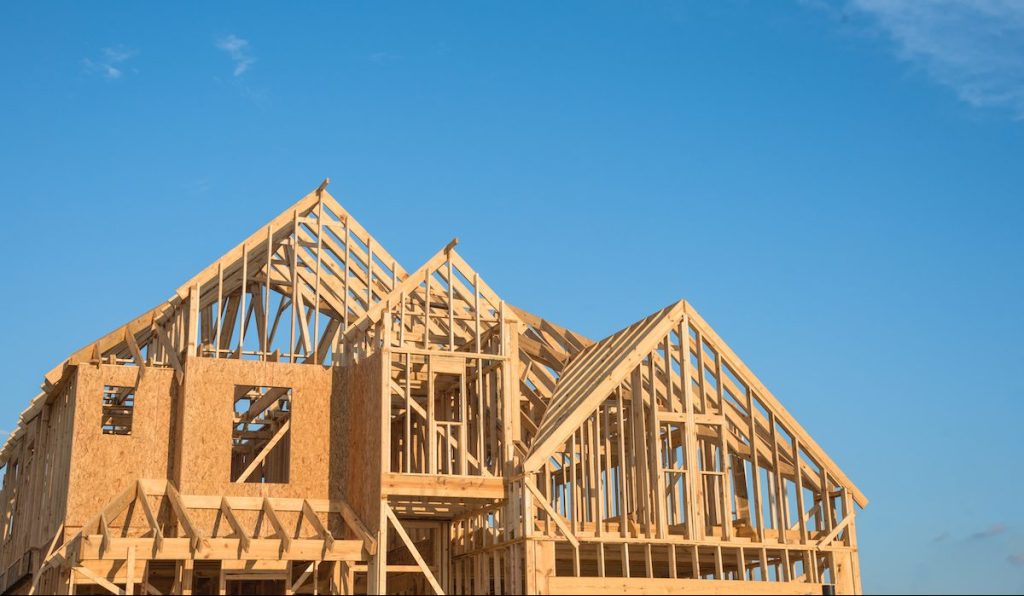Some things in life are so complicated that it’s easier to say, “Screw it — I’m not going to do this at all.” That’s what building a new home is like for most people. The process is so fraught with complexity that it can be more attractive to find a house that’s ready for move-in, even if it doesn’t check all the boxes.
But, even then, today’s homebuyers aren’t spoiled for choice. While mortgage rates are at an all-time low, people looking to buy their first home — particularly millennials, who accounted for half of all new home loans in 2019 — have a limited and aging stock of houses to choose from. And for those who still want to build a home from scratch, rising construction costs, limited lot sizes, and excessive red tape can make the process seem insurmountable.
Considering how much construction technology, materials, and techniques have evolved, building a new home should be far simpler than it is. There are too many obstacles along the way that don’t need to exist. And in the midst of the biggest single-family housing boom since the early 2000s, that’s a problem too urgent to ignore.
The real estate industry is in a serious time crunch to get new housing stock together. And on a zero-to-10 scale of efficiency, we’re at a zero. We can get to a 10 — I’m confident we will get to a 10 — but it’s unlikely unless we use technology to get there.
Why lenders need to revisit their quality control
As lenders adjust to evolving risk perspectives and perhaps even enhanced compliance regulations, they need to be able to react in real time and make the necessary changes quickly. Leveraging technology can help.
Presented by: DataVerify
Harder than it has to be
When my wife and I were in the market to buy a house, we got frustrated working with a broker and decided to build one ourselves. After nearly a year, a lot of research, and plenty of headaches, we made it happen — in large part because I had the luxury of time and resources on my side. I know that’s not the case for most people.
The build process was a logistical nightmare from start to finish. There are tons of overlapping components to understand. And trade technology, building codes, and regulations have evolved independently based on local needs. Add to that a lack of nationwide standards, practices, and platforms for disseminating new information among professionals, let alone insights for consumers.
So many times I wondered to myself, “Why are site logistics and materials managed by someone in a truck writing on a notepad?” “Why are costs so unpredictable?” And, like most consumers of late, “Why can I not just do all of this online?” I talked to a lot of industry professionals along the way and no one could explain the roadblocks to me.
The real estate industry is full of complications that don’t exist elsewhere, from the way we incentivize real estate brokers to the way we value land and homes. It’s clear the industry could benefit from a new way of thinking — especially when we already have the ability to make nearly every aspect simpler and more efficient.
Opportunities to innovate
Construction has traditionally been slow to pick up new technology compared to other industries. A few years ago, McKinsey found that construction is one of the least digitized sectors in the world, despite the benefits we’ve already seen from builders who’ve taken the leap.
Across industries, we should always be thinking about how we can harness human expertise more creatively, intelligently, and efficiently. The more we can use technology instead of people in the build context, the more we can do in the same amount of time.
There’s a strong disparity between what can be done and what is being done. Still, I’m encouraged to see companies using digital tools and platforms — or creating their own — to take little bites out of a gigantic industry, from streamlining financing and inspections, to centralizing communication, to optimizing budgets and reducing project delays.
Creating transparency
With so many moving parts involved in new home construction, financing can be one of the most opaque and confusing steps. Built Technologies in Nashville is one company that has created a suite of software to simplify loans, draws, and inspections for lenders and contractors. The entire workflow, including capital providers, contractors, and suppliers, can be managed online or through a familiar and accessible mobile app experience.
Automating for efficiency
Plenty of tasks in home construction require human eyes and hands. But, in other areas, machines are already proving to be better, faster and safer. Using new and automated technology in construction is the natural next step to making smarter decisions on and off site, from planning and designing to sourcing materials and scheduling workers.
Mosaic, an Arizona-based construction technology company, has developed a programming platform for determining the best way to build with the labor and materials on site. The platform creates digital models from standard construction drawings, and then combines huge amounts of data with knowledge from construction experts to allocate resources, coordinate schedules, and update costs in real time.
3D printing is another promising development that led to an Austin, Texas, startup building a house in a single day, and more recently, SQ4D’s first 3D-printed home in the U.S., constructed in Long Island for 50% of the average cost. The bottom line in both cases was how much 3D printing and automation saved on labor costs, which can account for nearly half of a typical project’s total budget.
Bringing more services under one roof
Block Renovations is a great example of a company using technology to make a multi-step process more efficient for contractors and more satisfying for customers. Block’s user-friendly platform keeps customers’ scope of work, documents, progress photos, and communications in one place, and features a materials library that lets people visualize the entire project before it starts. The company also matches each project with a vetted list of project planners, designers, and licensed and insured contractors, all of whom customers can connect with online.
Early disruptors like Redfin have similarly started covering more bases by combining services for mortgages, titles, and buying homes online. Whether through acquisition or expanding the number of services they offer, more companies are racing to own the relationship with buyers from start to finish. I envision a lot more amazing advances from real estate companies stepping up to the challenge.
Building a new foundation
The shortage of single-family housing in the U.S. is a problem that’s not going away anytime soon. The current surge in demand for suburban housing may have been accelerated by the pandemic, but the trend of people moving out of cities to the suburbs is nothing new. Except this time around, our audience is the most digitally savvy group of homebuyers to date.
The real estate industry at large has a long way to go before buying or building a new home is as simple (and fun) as people expect. When your back’s against the wall, you have to figure out how to create something that doesn’t exist. That’s an opportunity more than anything.
This column does not necessarily reflect the opinion of HousingWire’s editorial department and its owners.
To contact the author of this story:
Alec Hartman at alec@welcomehomes.com
To contact the editor responsible for this story:
Sarah Wheeler at swheeler@housingwire.com






